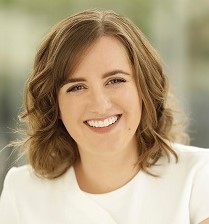Verbal communication is a fundamental part of our lives – we use it every day to request, enquire, demand and defend.
There are occasions however, when this process is impaired. This could be for a variety of reasons: physical impairments, stuttering or other speech-language disorders, or even severe cognitive impairment or autistic spectrum disorder.
There is however, a select group of individuals where in some contexts (for example, immediate family members), communication is normal and healthy, yet with others (teachers, peers and extended family) speaking appears to stop. As a result, significant disruption occurs in their education and social life and this can in some cases continue on into adulthood. This condition is referred to as selective mutism.
What is Selective Mutism?
Without knowledge and understanding of what selective mutism is, people tend to wonder if it is a behavioural disorder, withholding or refusing to speak on purpose, or whether their child is simply extremely shy (see below).
At its most basic level however, selective mutism is an anxiety disorder, or more precisely, a phobia. Children with selective mutism are basically terrified of speaking. However much they would love to be talking and interacting with others, they are filled with irrational fear and dread about speaking out loud.
How common is it?
The age of onset for selective mutism is approximately 2.7 to 4.1 years, however, it is not usually detected until the child starts school when more significant numbers are recorded.
Approximately 1 in 140 children under 8 struggles with selective mutism; taking into account older children, 1 in 550 children will be diagnosed with the condition.
What Causes Selective Mutism?
As selective mutism is a phobia it develops through conditioning as a learned fear or response. Fear conditioning refers to the specific type of classical conditioning in which phobias develop. Basically, an aversive stimulus is paired with a neutral context or stimulus thus resulting in fear responses when presented with the context or stimulus on its own. In the case of selective mutism, a life event (which may not seem particularly significant), creates a significant fear response that becomes conditioned with the expectation to speak.
At this point the individual’s subconscious detects the threat (the expectation to speak), and their sympathetic nervous system activates (the fight or flight response). In this situation, however the response is freeze, with symptoms such as heart pounding, expressionless face, throat tightening, catching their breath and essentially being unable to move or speak. Factors such as ongoing negative experiences with speaking, and the strengthening action of avoidance (the fear reduces, operant conditioning occurs and the behaviour is repeated) reinforce this response.
Shyness vs Selective Mutism
While there is a significant relationship between shyness and selective mutism, there are certain differences.
When observing a child with selective mutism interacting with their own families, they are often described as confident and in other situations when talking is not required they will appear to be quite confident. The problem occurs however, when people outside their comfort zone start conversations. Anxiety levels increase, speaking ceases and this does not abate until the pressure to speak is removed.
Shy children are unsure and slow to warm-up when interacting with others, however, with encouragement, shy children will gain confidence and become involved.
Another difference is that shy children find it difficult to initiate the interaction. If someone makes the first move, they are more than happy to respond. It must be noted that if ridicule occurs or a shy child is forced to speak before they are ready, selective mutism can develop.
Selective Mutism and Social Anxiety Disorder
A significant number of children with selective mutism will also suffer from Social Anxiety Disorder (SAD). There are some children with selective mutism however, that will engage in social situations when speech is not required.
To understand this one has to examine what is producing the anxiety. For an individual with selective mutism, they are not avoiding social situations, they are avoiding speaking; whereas the individual with SAD, is fearful of evaluation and judgement from others.
Another way to view this is that with SAD the individual is concerned about the consequences of speaking; for selective mutism, it’s the speaking itself.
Treatment for Selective Mutism
Some therapists may believe that because the child is not communicating, that an art or creative therapy is the most useful intervention. This is not the case. Although it will not make the situation worse, it will not make any significant improvement to the condition either.
Selective mutism is a phobia and thus needs to be treated using the same strategies as any phobia, such as cognitive-behaviour therapy using graded exposure, reinforcement and cognitive restructuring.
 Author: Sharyn Jones, B Psych (Hons).
Author: Sharyn Jones, B Psych (Hons).
Sharyn Jones is a Brisbane psychologist with 10 years of experience working with adults, adolescents, children and their parents. Using a combination of cognitive behavioural and solution focused therapies, she aims to facilitate positive changes in client’s lives so that they can achieve and obtain their desired goals.
To make an appointment try Online Booking. Alternatively, you can call Vision Psychology Wishart on (07) 3088 5422 or M1 Psychology Loganholme on (07) 3067 9129.
References:
- American Psychiatric Association. (2013). Diagnostic and statistical manual or mental disorders (5th ed.). Arlington, VA: American Psychiatric Publishing.
- Johnson, M. and Wintgens, A (2017). The selective mutism resource manual (2nd ed.). London; New York: Routledge.